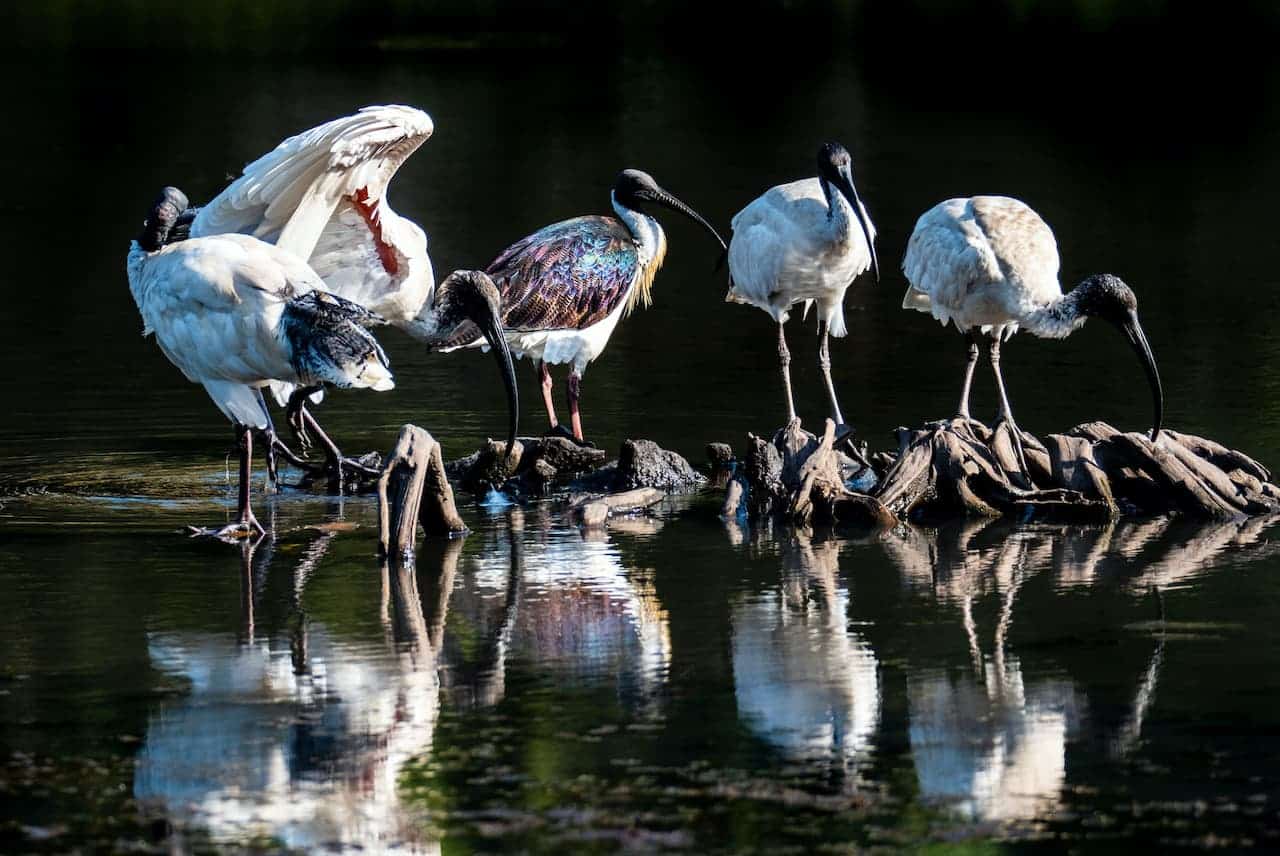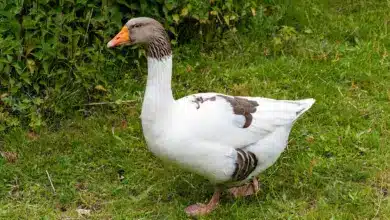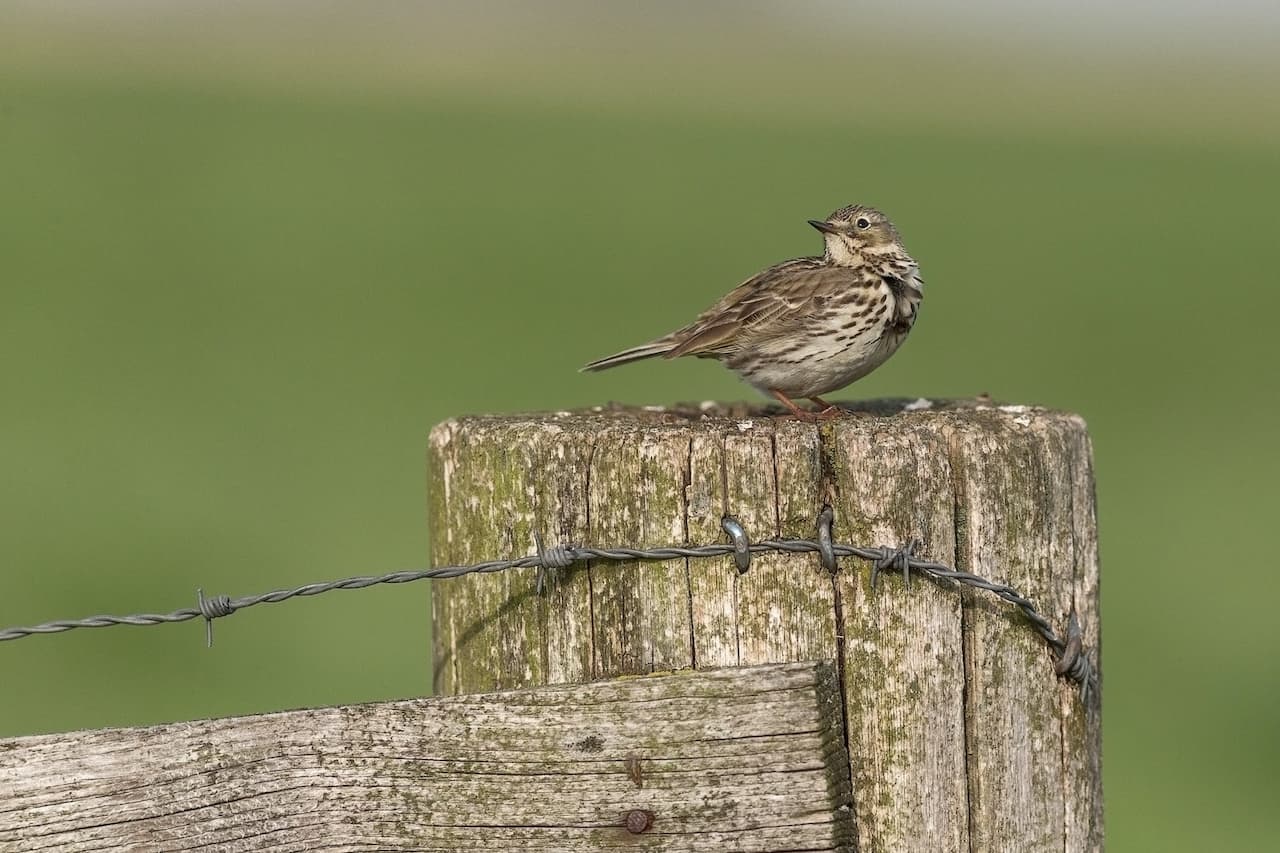Giant Ibis – Genus: Thaumatibis
The Giant Ibis (Thaumatibis gigantea) is a critically endangered ibis with an estimated population of only 100 surviving pairs. Its numbers have declined due to hunting and habitat destruction.
It is the largest of all ibis species, hence its common name.
Ibises resemble herons and share many of their habitats and behavioral traits, but unlike herons, ibises fly with necks outstretched and often in V-formation.

Distribution / Range
The Giant Ibis have a very limited range in northern Cambodia, with a few of them being found in extreme southern Laos.
They usually occur in marshes, pools, wide rivers and seasonal water-meadows in deciduous, lowland forests.
Description
Giant Ibises measure between 102–106 cm (40–42 in) in length and weigh, on average, 4.2 kg (9.3 lbs).
The adult plumage is dark. Its greyish head and upper neck are bald.
Breeding
Little is known about their breeding and nesting activities. However, they are believed to constructs shallow cup-shaped platform nests of sticks, grasses or reeds that are typically situated on trees near a body of water, such as rivers, swamps or lakes. The nests are often reused year-after-year.
Ibises usually lay of 2 – 4 eggs in a clutch.
Diet / Feeding
Giant Ibises mostly feed in shallow waters on aquatic insects, mollusks, frogs, and food sifted from the water surface.
Their diet also includes insects caught on land, as well as lizards, worms, skinks, and other small reptiles.





